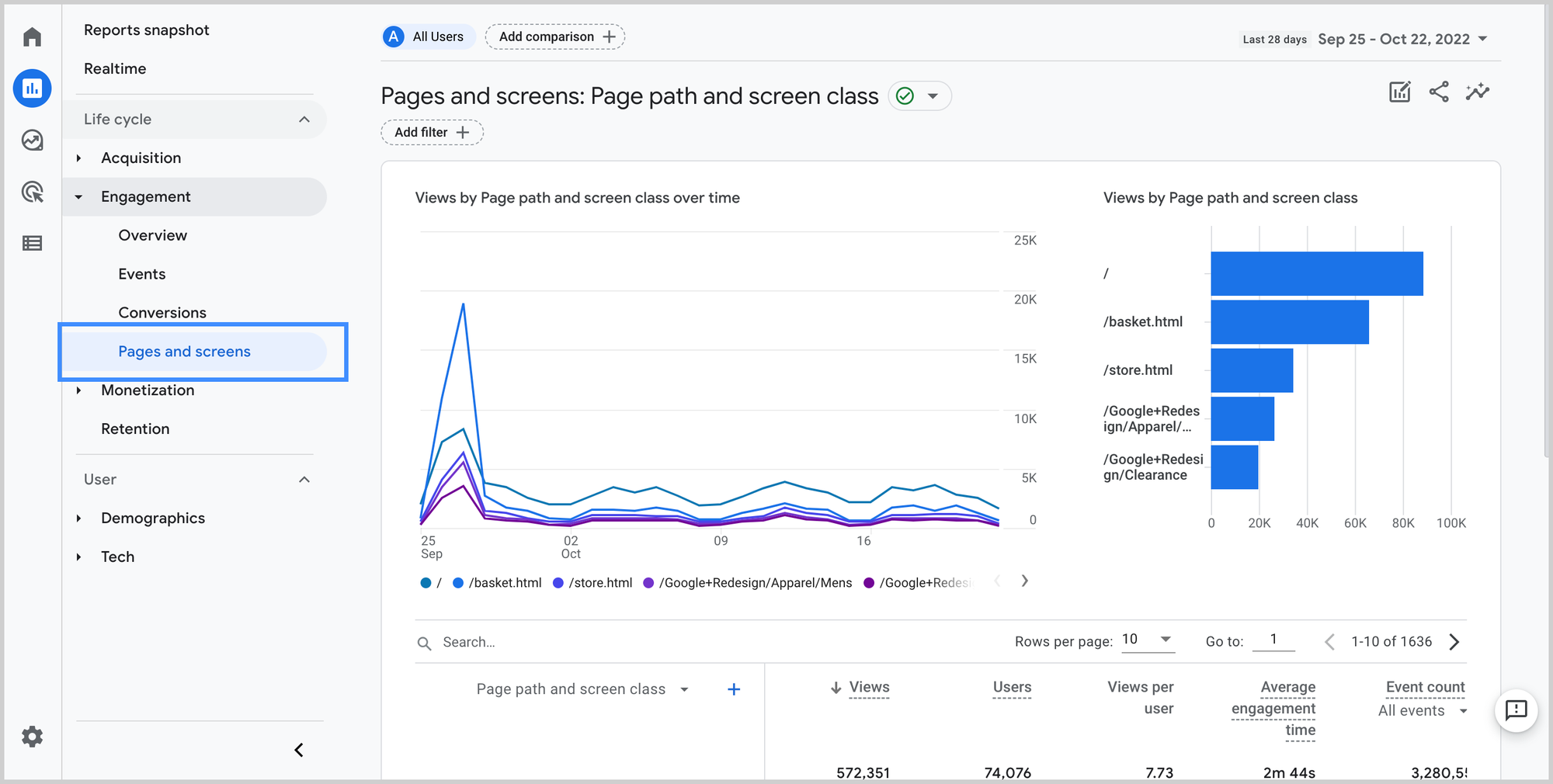Data. Nothing can give us greater assurance of success than knowing the data we have available and the interactions users have made with our website, and nothing is more useful than a Data-Driven Marketing Strategy to reach your goals.
Knowing browsing habits, demographics, time spent on the product page, and interactions generated, encompassing all this information within a container to standardize the data, should always be the premise for proper marketing management based on data analysis.
What can be measured with data analysis for marketing strategies?
Demographic data
What are the origins of our loyal users, where in the nation (or world) do we manage to generate more interactions to the site, what is the users' preferred language of interaction, or whether they are male or female. This data can be encapsulated within demographics: just think about the fact, if you are a make-up retailer, how important it can be to understand the age of our users and whether there is a small slice of the male market that is interested in certain products-if anything, more profitable.
Acquisition Data
How users come to interact with our web platform.
- Direct: Users already have the URL related to our website available and use it as an access point. One possibility is that they have already saved the URL as a bookmark or highlighted the link in their browsing history.
- Organic: through organic search engine placement we are able to intercept traffic interested in a particular article. The latest search engine algorithms have reached a truly advanced level of specificity, this is to simulate as truthfully as possible the results derived from the SERP.
- Paid Ads: Be they through search engines or within social media, paid advertising activities are often and frequently the primary source of supply as far as visits (and conversions) for our website are concerned.
- Referral: When visitors to our site come from other sites. Really telling examples are blogs or price comparators if we are directly selling goods and services.
Behavior data
Once users all have reached our site how they behave within it. They may in fact leave the platform without any interaction with it (Bounce Rate) or have a very high average time spent on a particular page. Already these two types of information are providing some really important data for us. Some examples of behavior data are: bounce rate, average time spent, page views, and event tracking.
Conversion Data
How much does our ecommerce site sell? This is perhaps the leading question when facing a performance analysis with respect to the web platform we own. Through conversion data we are able to monitor the actual ROI but more importantly identify the paths that led a user to make a purchase (or generate a lead) within the website.

More Data - More Revenue
Data Analysis is crucial for your marketing strategy. Having truthful data analysis simply can lead to exponential growth in your earnings. Knowing your ecommerce interactions can literally anticipate what the next trends will be, so you can apply your marketing strategy strong with a kind of prediction through which the margin of error of an advertising campaign is minimized.
Data-Driven Marketing: A Useful Example
One company that has always been a forerunner in the use of data-driven marketing strategies is definitely Booking.com. The sheer volume of users using the platform is truly frightening - just think that in the order of online hotel bookings in some cases the percentage of Booking.com usage is close to 80 percent! How, however, was it possible to reach these numbers? Simply by testing and analyzing the data. Booking.com's UX is the result of years of experience and testing, the position of CTA buttons, the use of colors, and the alternation of steps in the booking path have changed over time and have always had additions that have brought the Priceline group (of which Booking.com is a part) to the pinnacle of success even with the listing.

Personalized Marketing Strategies
How to personalize a marketing strategy through data. Making users' experiences and interactions unique based on their characteristics raises the possibility of generating revenue directly from these initiatives. Providing something that is actually adherent to customers' tastes, segmented by certain characteristics, is indeed paramount to defining a successful marketing strategy. Changing a product assortment in progress and targeting tested audience segments is a clear example of how a dynamic company intercepts demand for a product.
Upselling and Cross-Selling
A separate chapter deserves all those data-driven techniques through which we are able to accomplish cross-selling and upselling activities in a timely manner to the slices of customers who need them at that moment. Being able to make two products we have complementary and using, for example, those marketing techniques that allow us to identify potential increases in revenue from the same customer.
ROAS increasing with Data-Driven Marketing Strategies
By using an agency that makes it a point to optimize ecommerce and continually seek to refine marketing processes through data analysis, you can pinpoint the pain points where business losses occur. In fact, creating a customer segmentation process through proper cataloging attributes can give you a steady increase in ROAS and lead you to increase positives in the accounts at the end of the year by going on to create value for each and every customer, a value that in economic terms really means giving your company a boost.
It is very important that the information, in order to be complete in every detail, be shared across departments. it is vital that the completeness of a piece of data, which at first glance may seem uneven, be built from different metrics made available even from completely different business units. An example of common participation is undoubtedly that between the warehouse department and marketing, for current availability-variable over time-could influence sales cam
Data-driven marketing is a term for using customer data to make marketing decisions. It’s a process that begins with data collection and ends with the use of that data to improve marketing strategies. In between, there is analysis, modeling, and testing.
Benefits of Data-Driven Marketing
The benefits of data-driven marketing are clear. By using data to inform marketing decisions, businesses can save money, increase ROI, and improve the effectiveness of their marketing campaigns.
There are three main types of data-driven marketing:
1. ROAS increasing with Data-Driven Marketing Strategies
2. Customer Segmentation Based on Data Analysis
3. Increased Personalization through Data-Driven Insights
1. ROAS increasing with Data-Driven Marketing Strategies: Businesses that use data-driven marketing see an increase in ROAS (return on advertising spend). This is because they can target their advertising more effectively, resulting in less wasted spend and higher conversion rates. Additionally, they are able to track the performance of their campaigns more closely and adjust accordingly, further increasing ROAS.
2. Customer Segmentation Based on Data Analysis: Businesses can segment their customers into groups based on shared characteristics by analysing customer data. This allows them to create targeted marketing campaigns that are more likely to resonated with each group, resulting in higher conversion rates. Additionally, it helps businesses better understand their customers so they can create products and services that meet their paigns by proposing other types of pricing and ultimately radically changing communication.


